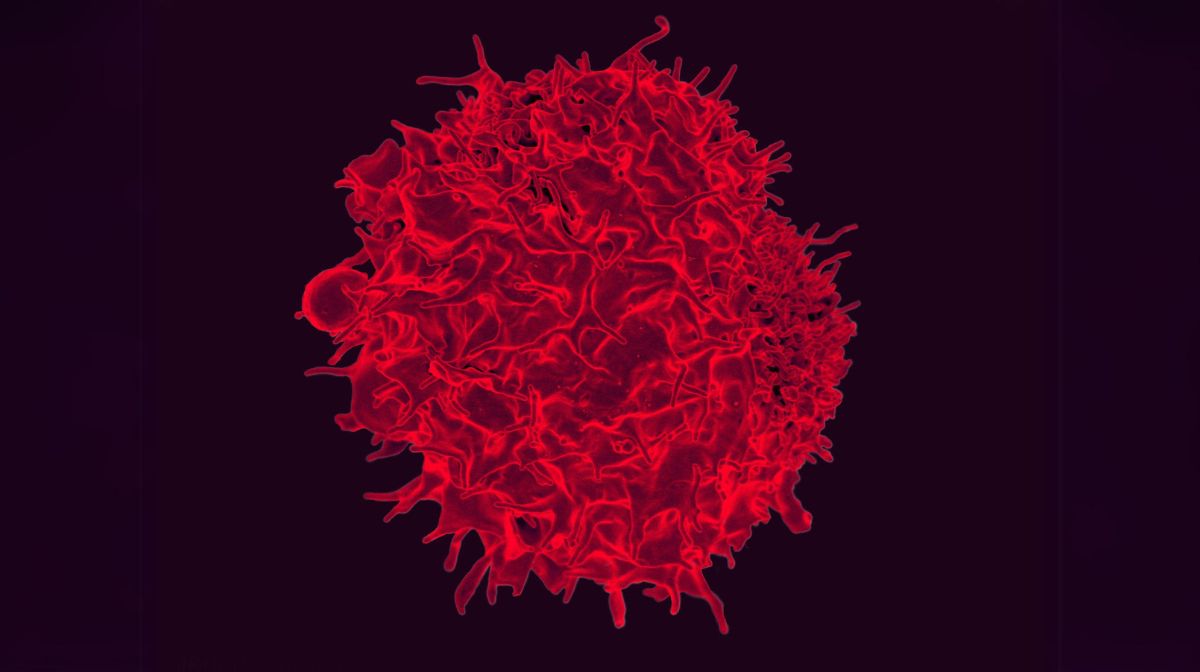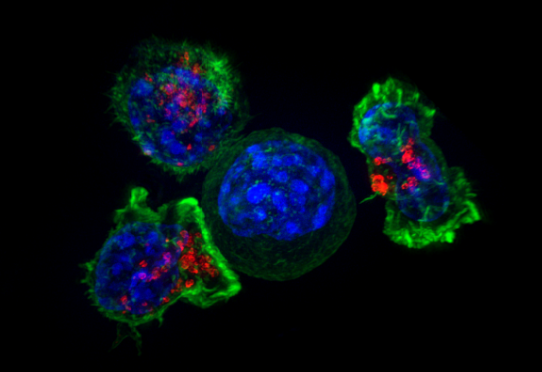
A team at the Marseille-Luminy Immunology Center has developed a system that allows the activation of T lymphocytes using light, using an approach called “ Optogenetics “. The tool made it possible to study the response of these important immune cells to different activation conditions. In vitroIt even made it possible to trigger the attack of cancer cells. The conceptual proof suggests the potential contribution of this approach Immunotherapy.
T lymphocytes are important immune cells that can help eliminate pathogens or tumor cells. In order to fulfill their task, these cells must first be activated. This step involves a series of transient interactions between the still inactive T lymphocytes and fragments of the unwanted cells to be eliminated (“ Peptides antigen” or “ Antigens “). After this activation, T lymphocytes differentiate into cell subtypes that defend the body through various mechanisms, in particular through the production of molecules involved in inflammation or substances cytotoxic.
At the center of this process, the receptors on the surface of T lymphocytes, which recognize foreign antigens, play a crucial role: “ These receptors, the TCRs, are the main players in the activation of T lymphocytes. They appear to be able to integrate or summarize different signals perceived by antigens during a series of stimulations. However, it has not yet been possible to demonstrate a causal relationship between the dynamics of these stimulations and the response achieved. », explains Rémi Lasserre, researcher Insert at the Marseille-Luminy Immunology Center. In other words, we still understand little about the mechanisms that determine how a T lymphocyte works after it is activated.
A light-sensitive phytochrome
To find out more, his team built a device that allows TCR stimulation to be modulated in time and space using light. This molecular tool – called LiTE for Light-inducible T cells activate – has an affinity for these receptors and contains a light-sensitive phytochrome of plant origin. Exposure to red light results in stimulation of the TCR, mimicking an interaction with a antigen. This phenomenon is reversible by lighting with another wavelength.
The researchers then equipped murine T lymphocytes with this device, in vitro, they exposed them to red light temporarily or over a longer period of time. They then observed the lymphocyte responses triggered by analyzing various Biomarkers. “ The LiTE system has proven to be a particularly effective molecular switch to highlight various lymphocyte activation programsremarks Rémi Lasserre. For example, we were surprised by the fact that the stimulation frequency responds differently to two types of T lymphocytes with different functions CD8+ and CD4+ [une fois activés, les premiers ont une action directe cytotoxique alors que les seconds contrôlent la réponse immunitaire adaptative]. It also profoundly affects the panel of Cytokines which is produced by CD4 T lymphocytes+. »
Potential clinical benefit
The researchers continued their work by adapting the LiTE system to try to always control the destruction of tumor cells by T lymphocytes in vitro. To do this, they coupled the tool with a antibody specific for a marker present on the surface of cells Melanoma. This construction – called LiTE-Me (for LiTE melanoma) – allows T lymphocytes equipped with the LiTE system to be brought closer to tumor cells located in the same culture dish in response to red light. Its use resulted in the destruction of almost 60% of the melanoma cells present.
Although this work is very preliminary, it suggests new perspectives in certain medical contexts. “ The LiTE system could not be used in a human organism. However, these experiments show that light could be a tool to control the activity of our immune cells with extreme precision. In this context, implantable and biocompatible devices that would illuminate deep areas of the body are also being developed by various teams around the world. The coupling of this type of lighting devices and application-optimized further developments of the LiTE system in vivo could lead to the development of ultra-targeted temporally and spatially targeted immunotherapies thanks to the activity limited to the duration and area of illumination. This would limit the side effects associated with certain side effects Immunotherapies », concludes Rémi Lasserre.
Rémi Lasserre carried out this study as a team Membrane dynamics and T cell signaling at the Marseille-Luminy Immunology Center (CIML, Unit 1104 Inserm/CRNS/Aix-Marseille University). He recently joined the Marseille Cancer Research Center (CRCM) to continue his work.
source : M. Jaeger et al. Light-inducible T cells trigger, tune, and shape the activation of primary T cells. PNAS, September 18, 2023; doi: 10.1073/pnas.2302500120
Author: AR
also read








